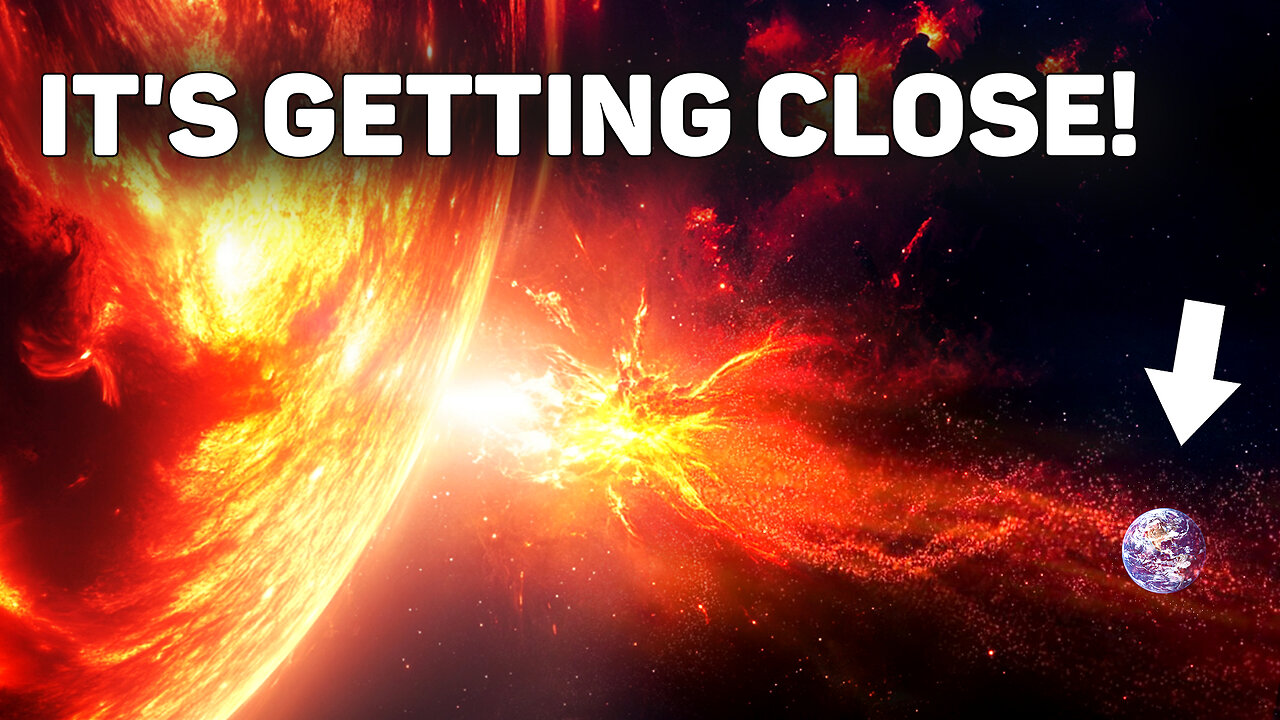Premium Only Content

WARNING! Intense Magnetic Storms Are Approaching!
As Earth experiences unprecedented disasters — ranging from abnormal rains and floods in the Sahara Desert to devastating hurricanes in Europe and Brazil — an even more dangerous threat is looming.
This weekly review of climate disasters from October 9 to 15 will open your eyes to the severity of what’s happening to our planet and help you understand the immense challenges humanity is now facing.
In Morocco, abnormal rains caused severe flooding, forming lakes and ponds in one of the driest regions of the world — the Sahara Desert.
The powerful storm "Kirk" wreaked havoc in Western Europe. In Portugal, over 300,000 people were left without power. In Galicia, Spain, fallen trees, landslides, and floods seriously disrupted traffic on roads and railways. In Paris, torrential rains set a new October record with 71 mm of rainfall in just one day. Throughout Lombardy, Italy, a red weather alert was declared.
In Brazil, after 167 days of drought, a heavy downpour flooded the capital, inundating streets and buildings. In Tres Ranchos, a "microburst" completely destroyed a brand-new sports field just before its opening. Meanwhile, in Vietnam, two tornadoes destroyed 67 homes and injured 19 people, including 5 children.
October has seen a surge in solar activity, with 6 major X-class solar flares since the beginning of the month. On October 3, an X9.0 flare erupted on the Sun, the largest in the current 25th solar cycle. It was expected to cause a G3-class geomagnetic storm within two days, but Earth's magnetic conditions remained normal, with the storm hitting only on the 4th day, leaving scientists puzzled.
A plasma ejection from the X1.8 flare on October 9 triggered a powerful G4-class geomagnetic storm, nearly reaching the highest G5 level.
The solar wind speed around Earth reached about 800 km/s, double the normal rate.
This storm was so intense that auroras were seen in unexpected places, such as the Mediterranean coast of Europe and even in Cuba and Haiti — regions where auroras are extremely rare. The storm caused disruptions in GPS systems and high-frequency radio communications. In the U.S., farmers had to halt operations or manually recalibrate precision agriculture equipment reliant on GPS.
The increasing occurrence of red auroras signals dangerous processes taking place in our atmosphere. More details on this were discussed at the “Global Crisis. The Is A Way Out” forum.
NASA representatives announced that the Sun has reached the maximum period of its solar cycle. Scientists expect solar activity to gradually decline after this peak, which could last around a year, as seen in past cycles. However, this time, the situation is drastically different. Our solar system is entering the peak of a much larger 12,000-year cycle, during which it is exposed to powerful external cosmic forces that transmit additional energy to the cores of all planets.
As a result, we are seeing a simultaneous increase in internal heat and activity on planets and even their moons. On Earth, this is manifesting as intensified volcanic and seismic activity, anomalies in the magnetic field and crust heating, along with escalating climate disasters: wildfires, storms, hurricanes, extreme precipitation, and floods.
The Sun is no exception — it too is receiving additional energy from this external cosmic influence, and its activity will continue to surge to an extreme level, far beyond what modern humanity has ever faced. Any upcoming solar flare could throw us back to the Stone Age.
This makes solving the climate problem an urgent priority.
In the "Global Crisis" forum series, scientists and volunteers have compiled exhaustive information on this topic. It's time for the global community to unite its scientific potential and collectively address the escalating climate problem before the climate decides our shared fate.
-
 42:52
42:52
Creative Society
26 days agoTruth From Egon Cholakian
8765 -
 43:27
43:27
Tucker Carlson
8 hours agoRay Dalio: America’s Hidden Civil War, and the Race to Beat China in Tech, Economics, and Academia
136K169 -
 56:56
56:56
Candace Show Podcast
8 hours agoEXCLUSIVE: Taylor Swift Will Be Deposed. | Candace Ep 150
133K135 -
 1:03:52
1:03:52
IsaacButterfield
5 hours ago $2.28 earnedRepublican Vs 25 Transgender Activists | Jewish Outrage | Lizzo Loses All the Weight
37.8K11 -
 1:10:23
1:10:23
Edge of Wonder
9 hours agoChinese Biochips Hacking Minds? Quantum Control & Journey Song Mandela Effect
60K7 -
 2:15:46
2:15:46
Quite Frankly
12 hours ago"Ghosts, Robotics, and OBE's" ft. Dr. Albert Taylor 2/21/25
57.9K17 -
 55:52
55:52
LFA TV
1 day agoMaking Germany Great Again | TRUMPET DAILY 2.21.25 7PM
42.4K8 -
 1:52:26
1:52:26
2 MIKES LIVE
8 hours ago2 MIKES LIVE #183 Open Mike Friday with Hannah Faulkner and Adelia Kirchner!
28K -
 12:09
12:09
MrBigKid
8 hours ago $2.59 earnedNew Mossberg 590R: Tactical Homestead Defender
35K7 -
 25:43
25:43
Degenerate Jay
13 hours ago $1.58 earnedThe Future Of Grand Theft Auto Online Looks Grim
32.8K1